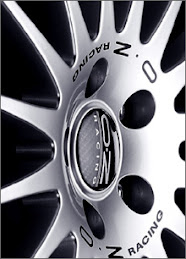
The BMW M3 Concept Car: The Prodigal Son Returns
BMW M GmbH has revealed an impression of the next generation M3 Coupe at the 77th Geneva Motor Show in the guise of a stunning concept.
The BMW M3 Concept car features a high-revving V8 engine that is anticipated for the series car once it goes into production. The M3 Concept Car gives an indication of what to expect when the production version of the E92 generation M3 Coupe is released. Bred on the race track for the road, the M3 Coupe has been an icon for more than 20 years.
The new BMW M3 Concept car is based on the just introduced BMW 3 Series Coupe (which has been critically acclaimed around the world, notably in Twin Turbo 335i guise).
For the M3 Concept car, most body panels have been recreated to suit the high-performance prescription that has invigorated driving enthusiasts for more than 20 years. The secret to any M3 is its successful combination of every day driving machine with race track weapon.
The much anticipated Geneva show car is finished in BMW M’s traditional concept paint finish “Chrome Shadow”. While the new BMW M3 shares the overall silhouette of the 3 Series Coupe, only the doors, boot lid and head and tail lamps are carried over without alteration in the M3 Concept Car’s body. All other components were specially engineered for the BMW M3 Concept Car. It features unique exterior aesthetics that accentuate its superior power.
The most notable change to the body is the bulging bonnet now made of weight-saving aluminum, complete with an enhanced and unmistakable powerdome, flanked by large air vents.
The V8 engine featured in the M3 Concept Car devours air at a faster rate than the previous straight six-cylinder engine, so the front apron is dominated by three extra-large air intakes. Along the flanks, the front guards host the now traditional M gills complete with indicator repeaters and M3 badge, while side skirts re-emphasize the M3 Coupe’s powerful stance and high-performance purpose.
The muscular front wheel arches of the BMW M3 Concept Car symbolize the high level of agility and driving stability achieved by this vehicle. Together with the forged 19-inch light alloy rims in the classic Y-spoke design, they emphasize the vehicle’s wide track, while a glance through the spokes of the rims reveals the compound high performance brakes developed exclusively for M vehicles.
Specially designed exterior mirrors feature a black double foot reminiscent of an aircraft wing. The mirrors contribute positively to enhanced stability at high speed, thanks to detailed wind-tunnel optimization.
From any angle, the rear of the car draws the eye to the large rear wheel and muscular haunches, underlining the fact that power is delivered to the road via the rear wheels. A typically discreet boot lip spoiler is designed to reduce lift at speed, keeping the rear wheels firmly on the ground. The contours of the diffuser, whose design is subdivided by modeled struts, mirror the shape of the air intakes at the front. The diffuser and the now-trademark M GmbH double exhaust tailpipes leave observers in no doubt as to the monstrous performance within.
The M3 Concept Car is fitted as standard with an advanced technology carbon-fiber reinforced plastic (CFRP) roof panel, as introduced on the limited edition E46 generation M3 CSL, and also used on the production M6 Coupe. In addition to helping to lower the centre of gravity and thus improve agility and handling control, the Formula 1-developed CFRP saves overall weight and is left unpainted, with the finely structured surface coated only with a layer of clear finish. When viewed side-on, the roof edges appear flatter, so lowering the perceived body height. The CFRP roof is a perfect example of how interlinking technical innovation with an individual design strategy was central to the development of the BMW M3 Concept Car.
The BMW M3 Concept Car is a vision that shows where striving for the ultimate driving experience will take us in the future
Specifications
| Engine |
| Type: | V8 |
| Displacement cu in (cc): | n.a. |
| Power bhp (kW) at RPM: | n.a. |
| Torque lb-ft (Nm) at RPM: | n.a. |
| Redline at RPM: | n.a. |
| Brakes & Tires |
| Brakes F/R: | ABS, vented disc/vented disc |
| Tires F-R: | R19 |
| Driveline: | Rear Wheel Drive |
| Exterior Dimensions & Weight |
| Length × Width × Height in: | n.a. |
| Weight lb (kg): | n.a. |
| Performance |
| Acceleration 0-60 mph s: | n.a. |
| Top Speed mph (km/h): | n.a. |
| Fuel Economy EPA city/highway mpg (l/100 km): | n.a. |































